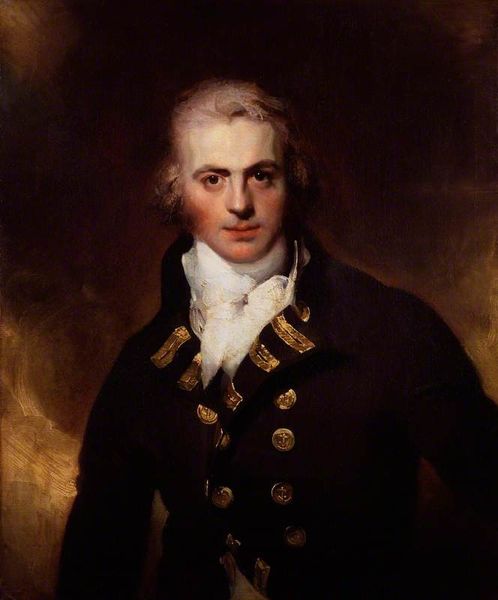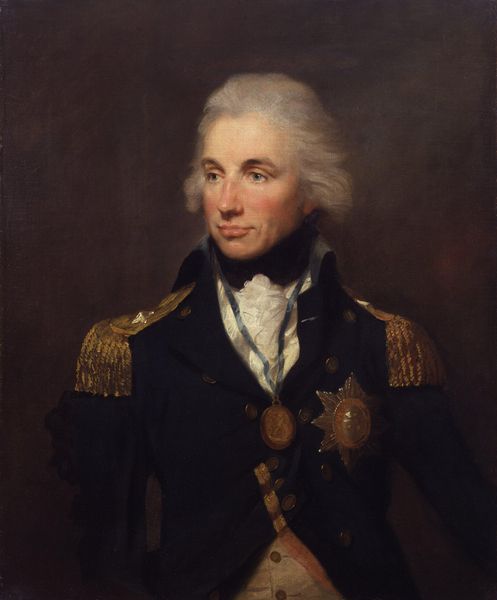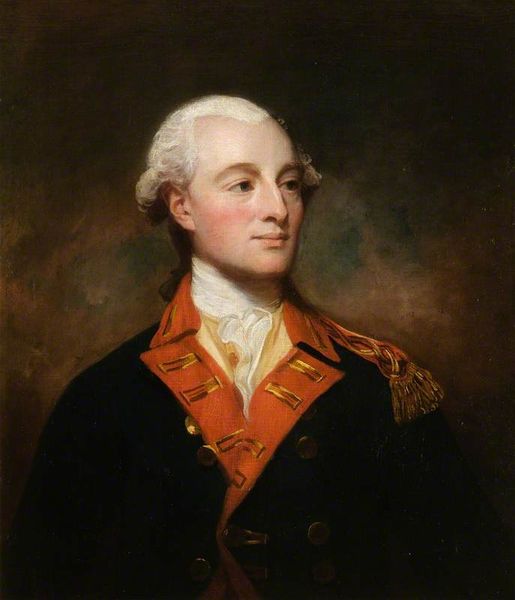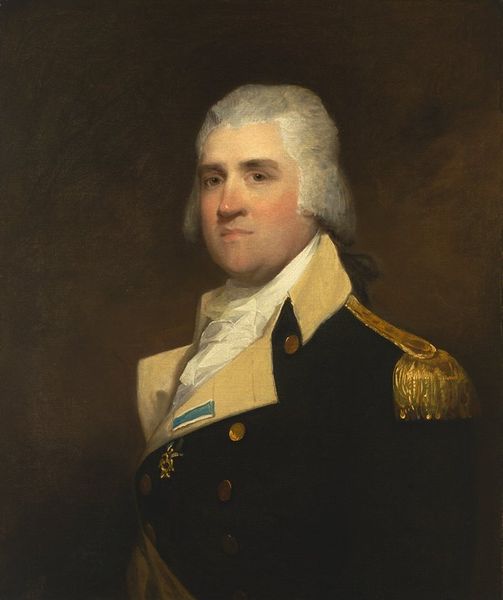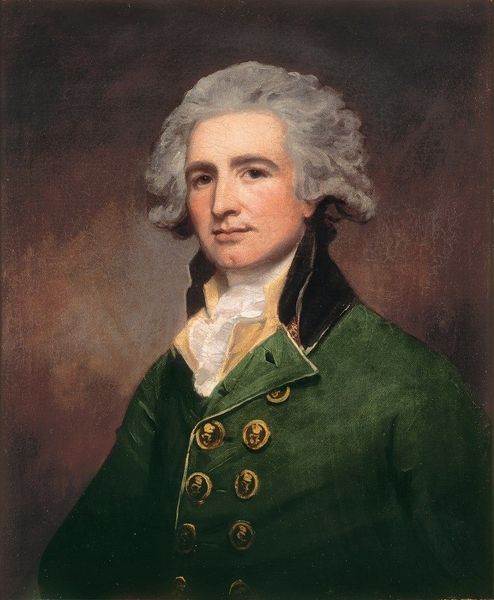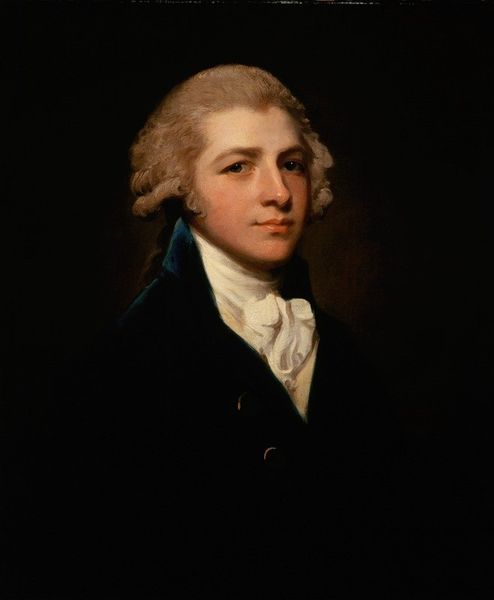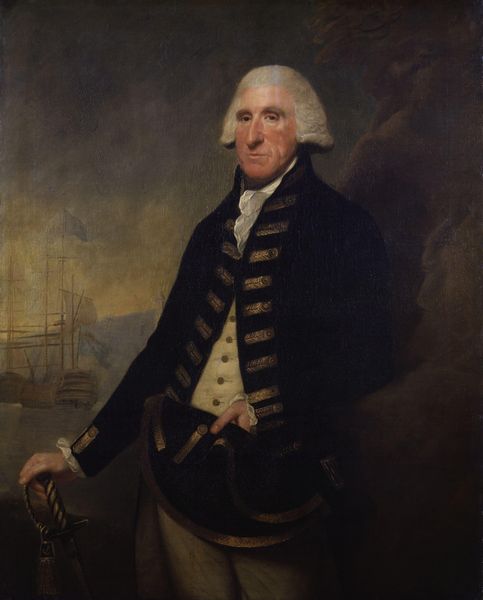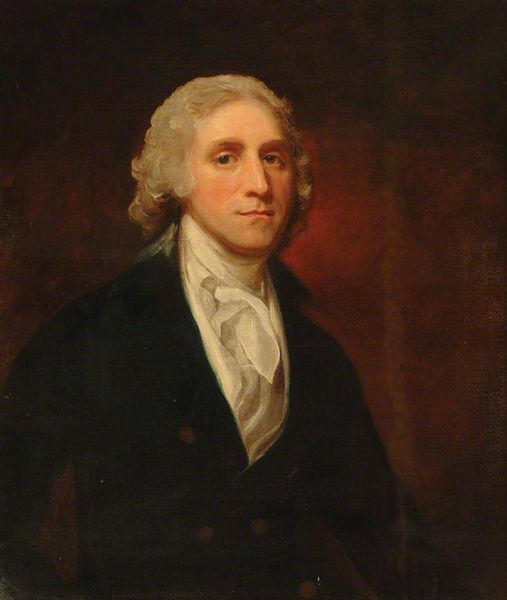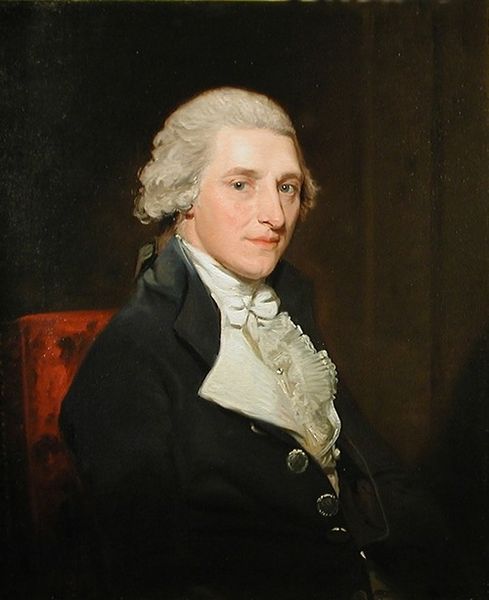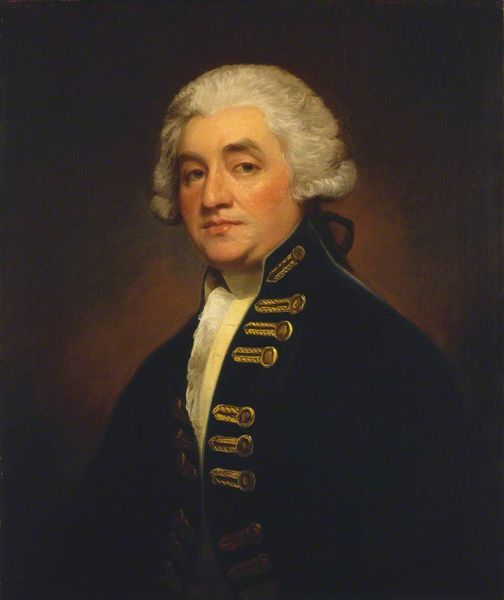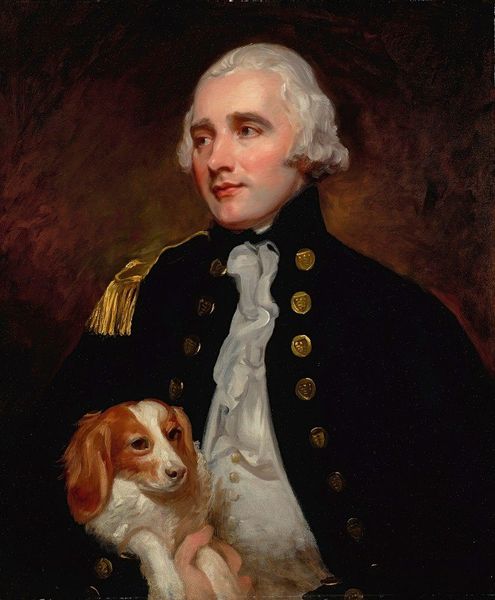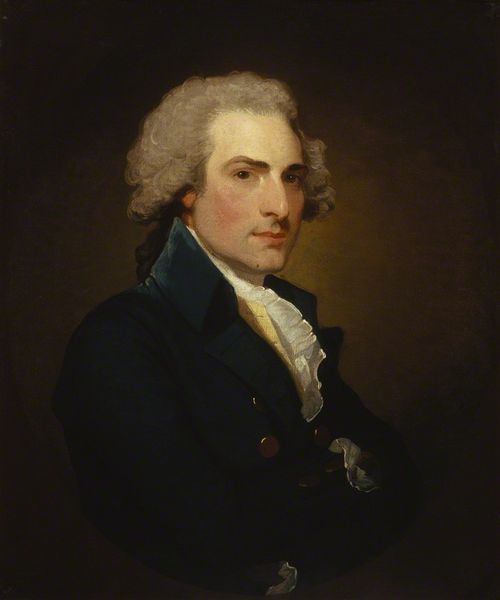
Copyright: Public domain
Curator: This is George Romney's 1788 portrait of Captain William Bentinck. The piece utilizes oil on canvas and falls within the Romantic style of portraiture so fashionable at the time. Editor: My immediate impression is a feeling of reserved power, isn’t it? Bentinck's gaze is direct, but not aggressive. I think the muted tones contribute to this sense of controlled intensity, which might resonate differently depending on the viewer's awareness of the subject’s history. Curator: Exactly, and consider the institutional context. Naval officers represented the projection of British power on a global stage, so such portraits played a vital role in shaping the public’s perception of the military and the empire. Romney was a celebrated portraitist. The Royal Navy, after all, commissioned likenesses like these to reinforce their own authority. Editor: Which also highlights how art becomes implicated in perpetuating certain narratives. In a way, we have to question what stories these portraits suppress or overshadow, specifically relating to colonialism and exploitation. Even the style is performative – it promotes a very curated and clean image of masculinity linked to positions of authority and conquest. Curator: The formal composition, the restrained color palette, the very fashionable clothing and powdered wig – all communicate status and respectability, intended to project an image of leadership. But let's consider the sitter's achievements: Bentinck eventually rose to become a vice-admiral. Editor: While understanding Bentinck's individual journey is relevant, it’s also about unraveling how individual actions contribute to broader power structures. Portraits like these serve as propaganda tools, masking violence behind supposed heroism and distorting historical accountability. The soft blush on his cheek juxtaposes sharply against his brutal line of work when contextualized by naval history. Curator: That being said, artists are rarely in full control of how their work is eventually utilized. Editor: Fair. Art, as a reflection of its time, offers us pathways to dissect our present through its lens. I leave the room pondering power, its representation, and my role in perpetuating it simply by engaging with this piece. Curator: Yes, food for thought. A fitting testament to Romney's skill and the complex dialogue around British imperial history.
Comments
No comments
Be the first to comment and join the conversation on the ultimate creative platform.
